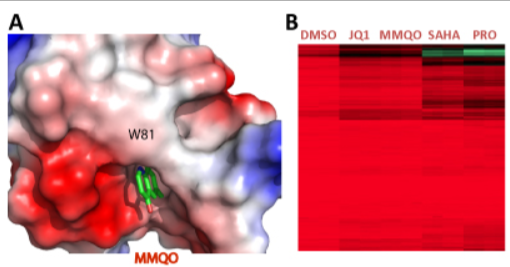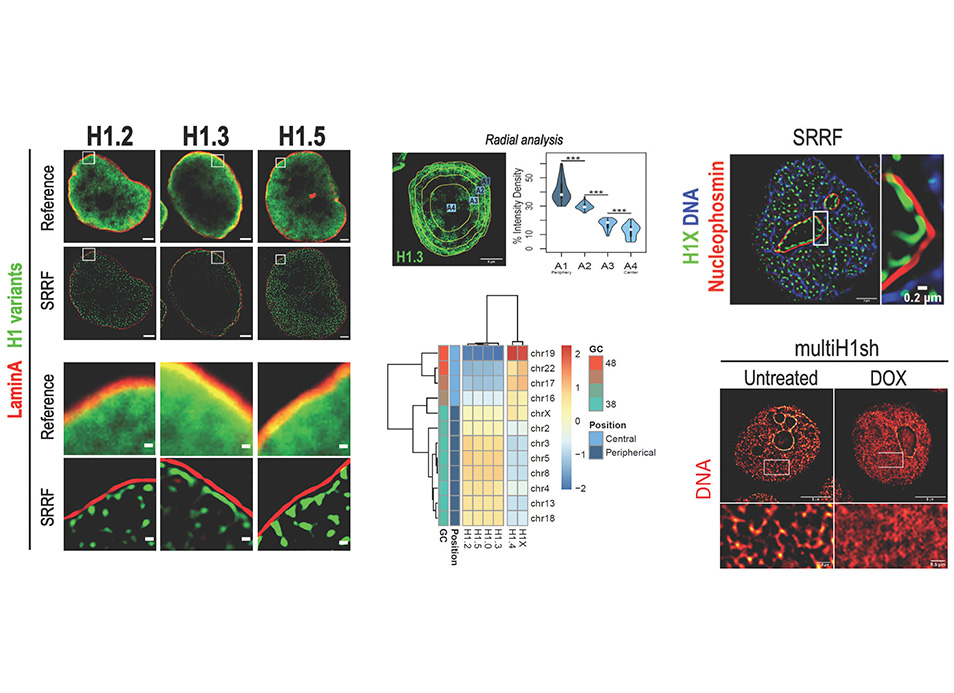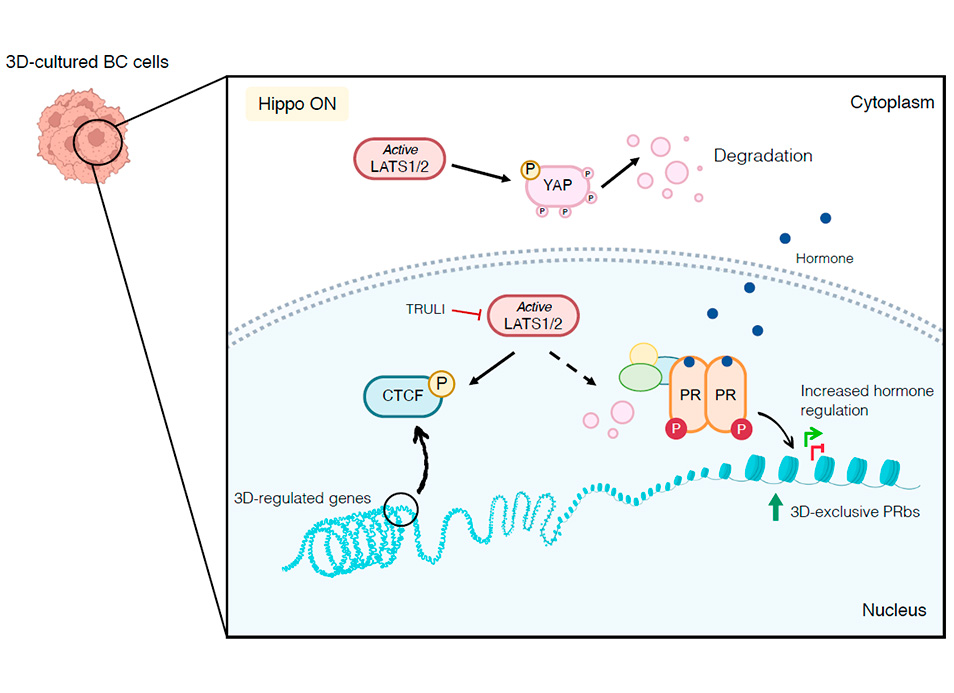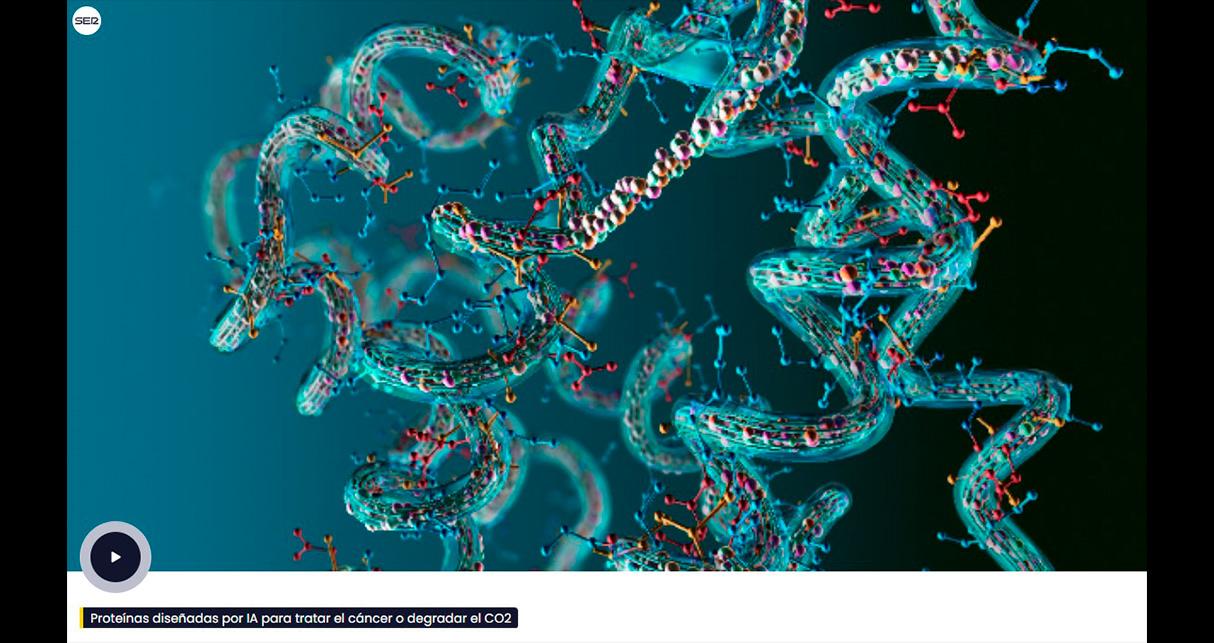New publication in eLife of the Jordan Lab in collaboration with the IBMB Imaging Platform showing that…
A new quinoline BRD4 inhibitor targets a distinct latent HIV-1 reservoir for re-activation from other ‘shock’ drugs
Researchers of the IBMB have shown that a previously identified Human Immunodeficiency Virus (HIV) latency-reversing agent (MMQO) acts as a bromodomain inhibitor. Despite of very different chemical structures, MMQO mimics the action of JQ1, a well-known bromodomain inhibitor, and binds to the bromodomain and extraterminal domain (BET) family protein BRD4.

Utilizing barcoded HIV-1 minigenomes, we demonstrate that PKC pathway activators, HDAC and bromodomain inhibitors all target different subsets of proviral integrations. Considering the fundamental differences of these compounds and the synergies displayed between them, we propose that the field should concentrate on investigating the development of combinatory “shock” cocktail therapies for an improved reservoir reactivation aiming to eradicate the latent functional proportion of HIV-1 proviruses in a patient.
Upon HIV-1 infection, a reservoir of latently infected resting T cells prevents the eradication of the virus from patients. To achieve complete depletion, the existing virus-suppressing antiretroviral therapy must be combined with drugs that reactivate the dormant viruses. We previously described a novel chemical scaffold compound, MMQO (8-methoxy-6-methylquinolin-4-ol) that is able to reactivate viral transcription in several models of HIV latency including J-Lat cells through an unknown mechanism. MMQO potentiates the activity of known latency-reversing agents (LRAs) or ‘shock’ drugs such as PKC agonists or HDAC inhibitors. Here we demonstrate that MMQO activates HIV-1 independently of the Tat transactivator. Gene expression microarrays in Jurkat cells indicated that MMQO treatment results in robust immunosuppression, diminishes expression of c-Myc, and causes the dysregulation of acetylation sensitive genes. These hallmarks indicated that MMQO mimics acetylated lysines of core histones and might function as a bromodomain and extraterminal domain protein family inhibitor (BETi). MMQO functionally mimics the effects of JQ1, a well-known BETi. We confirmed that MMQO interacts with the BET family protein BRD4. Utilizing MMQO and JQ1, we demonstrate how the inhibition of BRD4 targets a distinct subset of latently integrated barcoded proviruses from those targeted by HDAC inhibitors or PKC pathway agonists. Thus, the quinoline-based compound MMQO represents a new class of the BET bromodomain inhibitors, which due to its minimalistic structure holds promise for further optimization for increased affinity and specificity for distinct bromodomain family members and could potentially be of use against a variety of diseases, including HIV.
This research has been performed by the ‘Chromatin regulation of human and viral gene expression’ group (Dr. Albert Jordan) of the IBMB, in collaboration with researchers from CRG (Barcelona), Erasmus University Medical Center (Rotterdam) and Icahn Medical Institute (New York), and has been published in the Journal of Virology.
AbnerE, StoszkoM, ZengL, ChenH-C, Izquierdo-BouldstridgeA, KonumaT, ZoritaE, FanunzaE, ZhangQ, MahmoudiT, ZhouM-M, FilionG, JordanA (2018) A new quinoline BRD4 inhibitor targets a distinct latent HIV-1 reservoir for re-activation from other ‘shock’ drugs. Journal of Virology In press



